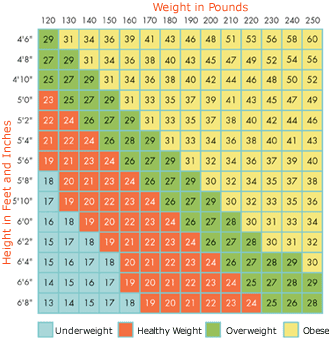5 3 Translation when a foreign entity maintains books in functional currency
Payroll Tax Services Business Tax Solutions
19 de maio de 2022Burn Rate: Why it is Important and How to Calculate it
29 de novembro de 20225 3 Translation when a foreign entity maintains books in functional currency
Contents:


In this new remote workforce frontier, time has become just as valuable as currency. The digital currency gained around 1.2% over the last 24-hours and is now trading at nearly $28,000 per coin – significantly higher than its November low of $15,480. The CTA in OCI is a plug figure to make the translated debits equal credits.

Once the auditors have assessed the company’s exposure to exchange rate risk, they must test the accuracy of the foreign currency translation. This includes testing the translation of foreign currency denominated balances, transactions, and income and expenses. Exchange rate risk is the risk that changes in currency exchange rates will impact the company’s financial statements.
Foreign Currency Translation Methods
Our API can be integrated into your ERP, giving you access to accurate, historical FX data and rates. These values represent the daily average of the Bid and Ask rates OANDA receives from many data sources. Access unmatched financial data, news and content in a highly-customised workflow experience on desktop, web and mobile. Major Currencies—This refers to a short list of the most traded currencies, which generally stay the same year-to-year. Most recently, this includes the U.S. dollar , Euro , Japanese yen , British pound , Australian dollar , Canadian dollar , and the Swiss franc .
Press Release- January 3, 2023: Superintendent Adrienne A. Harris … – DFS.NY.gov
Press Release- January 3, 2023: Superintendent Adrienne A. Harris ….
Posted: Wed, 04 Jan 2023 08:00:00 GMT [source]
Accounting API Get a cloud accounting software that is fully programmable via API. Embedded Accounting Win more, higher paying deals and increase customer retention with SoftLedger’s embedded accounting solution. Generally, it accepts any posted exchange rate that is used consistently. Virtually every major international lender has large liabilities denominated in dollars since the greenback serves as the global reserve currency.
History of IAS 21
To use OANDA’s free currency converter, type into the relevant field currency names, 3-letter ISO currency symbols, or country names to select your currency. You can convert world currencies, precious metals, or obsolete currencies. You can also access currency exchange rates dating back to January 1990.
Here’s an ultimate guide on how to complete foreign currency translations in SoftLedger. For additional exchange rates not listed below, refer to the governmental and external resources listed on theForeign Currency and Currency Exchange Ratespage or any other posted exchange rate . Britannia PLC is a wholly-owned subsidiary of USA Corp located in the United Kingdom. It is a distinct and separable operation of USA Corp and has a functional currency of the British pound sterling ; therefore, it meets the definition of a foreign entity of USA Corp. A gain may be reported if the assets have increased in value since the time of purchase. This adjustment is then added as a single line item to the financial statement, typically under retained earnings.
What is Foreign Currency Translation?
To statement of comprehensive income from U.S. dollars to foreign currency, multiply the U.S. dollar amount by the applicable yearly average exchange rate in the table below. For consolidation purposes, a foreign entity is required to apply GAAP and prepare financial information in its functional currency. For example, impairment adjustments should be determined and recorded in a foreign entity’s functional currency. Currency translation adjustments also appear on financial statements prepared under IFRS. The treatment of currency translation is similar but not identical between IFRS and U.S. GAAP. Information on presentation in the financial statements may be obtained from sources such as Deloitte’s IAS Plus guide on IFRS model financial statements at /fs/2007modelfs.pdf .

As mentioned above, you’ll use the average exchange rate for the period for translating the cash flow. The average rate for the period is used for translation currencies for income statement accounts. Transaction risk is the risk faced by a company when making financial transactions between jurisdictions. The risk is the change in the exchange rate before transaction settlement. Essentially, the time delay between transaction and settlement is the source of transaction risk. Transaction risk can be mitigated using forward contracts and options.
To translate a foreign entity’s functional currency financial statements into the reporting currency, a reporting entity should utilize the exchange rates as detailed in the Figure FX 5-2. The effect of changes in exchange rates between the foreign entity’s functional currency and the reporting currency is recognized in the reporting entity’s cumulative translation adjustment account. Cumulative translation adjustments are an integral part of financial statements for companies with international business operations. The CTA is a line item within the balance sheet’s accumulated other comprehensive income section that reports any gains or losses that have occurred because of exposure to foreign currency markets through normal business activities. The line item is clearly noted, separating the information from that of other gains or losses. What audit procedures are commonly used to assess the accuracy of foreign currency translation in financial statements?
Once the business has denominated its functional currency, it needs to ensure its financial statements only use the selected currency. Instead of recording losses in separate headings for sales in separate currencies, the balance sheet shall feature sales only in the functional currency. Translation risk is higher when a company holds a greater portion of its assets, liabilities, or equities in a foreign currency.
How does this currency converter work?
However, let’s assume that the https://1investing.in/ rate changes when Company B closes the books at period end. For this example, we’ll say that when Company B closes the books on September 30th, 1 EUR is now worth 1.5 USD. Remember that because Company B’s functional currency is US dollars, they still record the transaction in USD even though they will be paid in EUR – the local currency. For simplicity, let’s assume that on the date of the transaction agreement, 1 EUR is equivalent to 1 USD. Transaction currency is a currency in which the client performs the payment.
- At the end of the year, translate the results, such as income or loss, into U.S. dollars to report on your income tax return.
- Retained earnings and other equity items are at historical rates accumulated over time.
- Companies typically need this process as part of their financial record keeping.
- Translation risk is higher when a company holds a greater portion of its assets, liabilities, or equities in a foreign currency.
Economic risk, also known as forecast risk, is the risk that a company’s market value is impacted by unavoidable exposure to exchange rate fluctuations. Such a type of risk is usually created by macroeconomic conditions such as geopolitical instability and/or government regulations. Since the exchange rates in this report are not current rates of exchange, they should not be used to value transactions affecting dollar appropriations. Since 1995, the Xe Currency Converter has provided free mid-market exchange rates for millions of users.
- Exhibit 4 shows a gain of $63,550 in the OCICTA account because net assets are being translated at a rate higher than the rates being used for the common stock, beginning retained earnings, and the net income from operations.
- With the fluctuation in the foreign exchange, the value of the company’s assets and liabilities is also subject to variations.
- The benefit of it is that a TC can be automatically transformed if the money of the buyer differs from the seller’s currency.
- The original historical rate at the point of acquiring – The original historical rate at the point of acquiring simply uses the exchange rate of the date when the entry was created for the income statements.
It ignores the changes in the exchange rates, and translation gains and losses are recognized in the income statement as soon as it occurs. However, the exchange rates are an important consideration, because it affects the currency value to a great extent. Businesses with international operations must translate their transactions to their functional currency, which is generally their domestic currency. With the fluctuation in the foreign exchange, the value of the company’s assets and liabilities is also subject to variations. The financial statements are translated into domestic currency by translating the income statement.
Commerce without borders: Shopify strengthens international selling … – Shopify
Commerce without borders: Shopify strengthens international selling ….
Posted: Wed, 14 Sep 2022 07:00:00 GMT [source]
Adaptable Subledger Use only Accounts Receivable, Accounts Payable, or another module as your accounting subledger. Enable Financial Consolidation Instantly centralize your multi-entity, multi-currency accounting with SoftLedger’s financial consolidation software. SoftLedger Pay Want someone else to handle all of your supplier payments for you? Manage Multiple Entities Consolidate multiple businesses, properties and investments, in real-time. Financial Services A full-featured financial services accounting software letting you easily handle multiple entities.
In contrast, the foreign currency translation refers to converting the foreign currency transaction into the functional currency as the same is done in the currency other than its functional currency. Still, from an accounting point of view, financial statements should be presented in a single currency, and for this, foreign currency translation is required. So, the foreign currency translation process’s first step involves matching the foreign entities’ financial statements to US GAAP.
